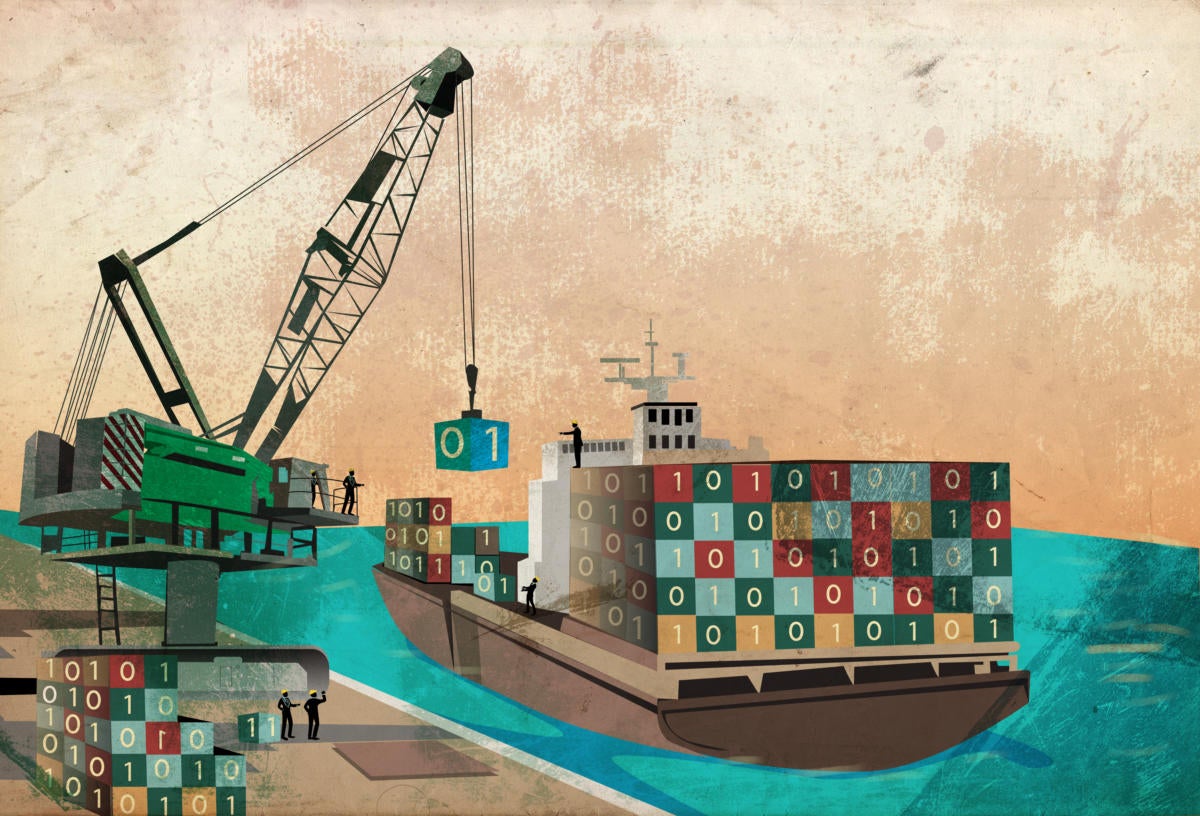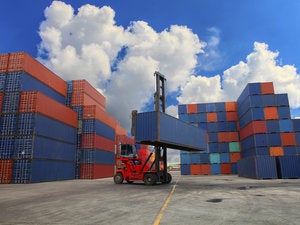Containers provide a lightweight way to take application workloads portable, like a virtual machine but without the overhead and bulk typically associated with VMs. With containers, apps and services can be packaged up and moved freely between physical, virtual, or cloud environments.
Docker, a container creation and management system created by Docker Inc., takes the native container functionality found in Linux and makes it available to end-users through a command-line interface and a set of APIs.
Many common application components are now available as prepackaged Docker containers, making it easy to deploy stacks of software as decoupled components (the microservices model). That said, it helps to know how the pieces fit together from the inside out.
Thus, in this guide, I install the Apache web server in a Docker container and investigate how Docker operates along the way.
Install Docker
I’m using Ubuntu as the foundation of the Docker build. Ubuntu is not just a popular and widely used distribution, but the Docker team itself uses Ubuntu for development, and Docker is supported on Ubuntu Server from versions 12.04 and up. For the sake of simplicity, I start with instructions when using a fresh install of Ubuntu 16.04.
Prepare Ubuntu Linux for Docker
The first thing to do is obtain the proper version of the kernel and its headers:
$ sudo apt-get install --install-recommends linux-generic-hwe-16.04
This process may take some time and will require a reboot when you’re done:
$ sudo reboot
You may also need to upgrade other packages in the system afterwards, too:
$ sudo apt-get update
$ sudo apt-get upgrade
Install Docker on Ubuntu
Installation of Docker on CentOS, Fedora, Debian, Ubuntu, and Raspbian Linux distributions is made easy by way of a shell script that you can download from https://get.docker.com/. For that you’ll need the curl command. To get the newest version of curl:
sudo apt-get install curl
Once you have curl installed, fetch the install script and set it running:
curl -s https://get.docker.com | sudo sh
When the script finishes installing, you see a note like the following, with installation details about the version of Docker, both the client and the server components:
 IDG
IDGNote the details near the bottom about adding nonroot users to Docker. It’s convenient to do this, but if you do, it’s recommended to create a nonroot user specifically for working with Docker and for no other function. For the sake of this tutorial, though, I’m sticking with using sudo to run Docker by way of a nonprivileged user.
Now you can test out a basic Docker container:
$ sudo docker run -i -t ubuntu /bin/bash
This command downloads the generic Docker Ubuntu image (as per the ubuntu parameter) and run the /bin/bash command in that container. The -i and -t options open standard input and a pseudo TTY respectively.
If it’s successful, you should see the hostname in the command prompt change to something like root@216b04387924:/#, which indicates the ID number (and hostname) of your new running container. To leave, type exit, same as you would to leave any shell session.
You should now have a functional Docker installation on your server. You can test it and get basic information using the docker info command:
$ sudo docker info
The output of the docker info command shows the number of containers and images, among other pertinent information. Note that it may be quite lengthy; this example shows only the last of two pages.
 IDG
IDGOne last change you will need to make if you’re running Ubuntu’s UFW firewall is to allow for packet forwarding. You can check whether UFW is running by entering the following:
$ sudo ufw status
If the command returns a status of inactive, you can skip this next step. Otherwise you will need to edit the UFW configuration file /etc/default/ufw and change the policy for forwarding from DROP to ACCEPT. To do this using the Nano editor, enter the following:
$ sudo nano /etc/default/ufw
And change this line:
DEFAULT_FORWARD_POLICY="DROP"
To this:
DEFAULT_FORWARD_POLICY="ACCEPT"
Save the file, then run:
$ sudo ufw reload
Work with Docker images and Docker containers
Docker containers are much more efficient than virtual machines. When a container is not running a process, it is completely dormant. You might think of Docker containers as self-contained processes—when they’re not actively running, they consume no resources apart from storage.
You can view active and inactive containers using the docker ps command:
# This command will show ALL containers on the system$ sudo docker ps -a
# This will show only RUNNING containers
$ sudo docker ps
You can view all available commands by simply entering docker. For an up-to-date rundown of all commands, their options, and full descriptions, consult the official command-line client documentation.
When I ran docker run earlier, that command automatically pulled an Ubuntu container image from the Docker Hub registry service. Most of the time, though, you’ll want to pull container images into the local cache ahead of time, rather than do that on demand. To do so, use docker pull, like this:
$ sudo docker pull ubuntu
A full, searchable list of images and repositories is available on the Docker Hub.
Docker images vs. containers
Something worth spelling out at this point is how images, containers, and the pull/push process all work together.
Docker containers are built from images, which are essentially shells of operating systems that contain the necessary binaries and libraries to run applications in a container.
Images are labeled with tags, essentially metadata, that make it easy to store and pull different versions of an image. Naturally, a single image can be associated with multiple tags: ubuntu:16.04, ubuntu:xenial-20171201, ubuntu:xenial, ubuntu:latest.
When I typed docker pull ubuntu earlier, I pulled the default Ubuntu image from the Ubuntu repository, which is the image tagged latest. In other words, the command docker pull ubuntu is equivalent to docker pull ubuntu:latest and (at the time of this writing) docker pull ubuntu:xenial.
Note that if I had typed:
$ sudo docker pull -a ubuntu
I would have puledl all images (the -a flag) in the Ubuntu repository into my local system. Most of the time, though, you will want either the default image or a specific version. For example, if you want the image for Ubuntu Saucy Salamander, you’d use docker pull -a ubuntu:saucy to fetch the image with that particular tag from that repo.
The same logic behind repos and tags applies to other manipulations of images. If you pulled saucy as per the above example, you would run it by typing sudo docker run -i -t ubuntu:saucy /bin/bash. If you type sudo docker image rm ubuntu, to remove the ubuntu image, it will remove only the image tagged latest . To remove images other than the default, such as Ubuntu Saucy, you must include the appropriate tag:
sudo docker image rm ubuntu:saucy
Docker image and container workflow
Back to working with images. Once you’ve pulled an image, whatever it may be, you create a live container from it (as I’ve shown) by executing the docker run command. After you have added software and changed any settings inside the container, you can create a new image from those changes by using the docker commit command.
It’s important to note that Docker only stores the deltas, or changes, in images built from other images. As you build your own images, only the changes you make to the base image are stored in the new image, which links back to the base image for all its dependencies. Thus you can create images that have a virtual size of 266MB, but take up only a few megabytes on disk, due to this efficiency.
Fully configured containers can then be pushed up to a central repository to be used elsewhere in the organization or even shared publicly. In this way, an application developer can publish a public container for an app, or you can create private repositories to store all the containers used internally by your organization.
Create a new Docker image from a container
Now that you have a better understanding of how images and containers work, let’s set up a Apache web server container and make it permanent.
Start with a new Docker container
First, you need to build a new container. There are a few ways to do this, but because you have a few commands to run, start a root shell in a new container:
$ sudo docker run -i -t --name apache_web ubuntu /bin/bash
This creates a new container with a unique ID and the name apache_web. It also gives you a root shell because you specified /bin/bash as the command to run. Now install the Apache web server using apt-get:
root@d7c8f02c3c8c:/# apt-get update
root@d7c8f02c3c8c:/# apt-get install apache2
Note that you don’t need to use sudo, because your’re running as root inside the container. Note that you do need to run apt-get update, because, again, the package list inside the container is not the same as the one outside of it.
The normal apt-get output appears, and the Apache2 package is installed in your new container. Once the install has completed, start Apache, install curl, and test the installation, all from within your container:
root@d7c8f02c3c8c:/# service apache2 start
root@d7c8f02c3c8c:/# apt-get install curl
root@d7c8f02c3c8c:/# curl http://localhost
Following the last command, you should see the raw HTML of the default Apache page displayed in the console. This means our Apache server is installed and running in your container.
If you were doing this in a production environment, you’d next configure Apache to your requirements and install an application for it to serve. Docker letd directories outside a container be mapped to paths inside it, so one approach is to store your web app in a directory on the host and make it visible to the container through a mapping.
Create a startup script for a Docker container
Remember that a Docker container runs only as long as its process or processes are active. So if the process you launch when you first run a container moves into the background, like a system daemon, Docker will stop the container. Therefore, you need to run Apache in the foreground when the container launches, so that the container doesn’t exit as soon as it fires up.
Create a script, startapache.sh, in /usr/local/sbin:
# You might need to first install Nano inside the container
root@d7c8f02c3c8c:/# apt-get install nano
root@d7c8f02c3c8c:/# nano /usr/local/sbin/startapache.sh
In the startapache.sh file, add these lines:
#!/bin/bash
. /etc/apache2/envvars
/usr/sbin/apache2 -D FOREGROUND
Write the changes and save the file. Then make it executable:
root@d7c8f02c3c8c:/# chmod +x /usr/local/sbin/startapache.sh
All this small script does is bring in the appropriate environment variables for Apache and start the Apache process in the foreground.
You’re done modifying the contents of the container, so you can leave the container by typing exit. When you exit the container, the container will stop.
Commit the container to create a new Docker image
Now you need to commit the container to save the changes you’ve made:
$ sudo docker commit apache_web local:apache_web
The commit will save your container as a new image and return a unique ID. The argument local:apache_web will cause the commit to be placed in a local repository named local with a tag of apache_web.
You can see this by running the command sudo docker images:
REPOSITORY TAG IMAGE ID CREATED VIRTUAL SIZE
local apache_web d95238078ab0 4 minutes ago 284.1 MB
Note that the exact details of your image—the image ID, the size of the container—will be different from my example.
Docker containers are designed to be immutable. Whenever you commit changes to a container, the results are written out to an entirely new container, never to the original. If you want to swap out Apache with, say, Nginx, you would start with the original ubuntu:latest container, add Nginx to that, and save out the results as an all-new container named something like local:nginx.
Understand Docker networking basics
Now that you have our image, you can start our container and begin serving pages. Before you do, however, let me take a moment to explain how Docker handles networking.
When Docker is installed, it creates three virtual networks that can be used by Docker containers:
- bridge: This is the network that containers connect to by default. The bridge network allows containers to talk to each other directly, but not to the host system.
- host: This network lets containers be seen by the host directly, as if any apps within them were running as local network services.
- none: This is essentially a null or loopback network. A container connected to none can’t see anything but itself.
When you want to launch a container and have it communicate with both other containers and the outside world, you need to manually map ports from that container to the host. For the sake of my example, you can do this on the command line when you launch your newly created container:
$ sudo docker run -d -p 8080:80 --name apache local:apache_web /usr/local/sbin/startapache.sh
The -p switch is used for port mapping. Here, it maps port 8080 on the host to port 80 inside the container.










![gears [Thinkstock]](https://images.idgesg.net/images/article/2017/08/gears_thinkstock_599788460-100732419-small.3x2.jpg?auto=webp&quality=85,70)



